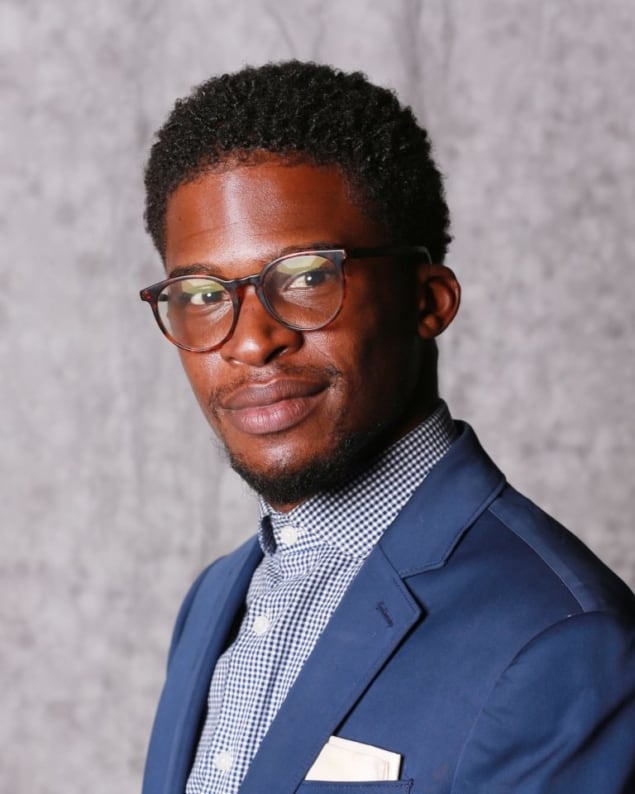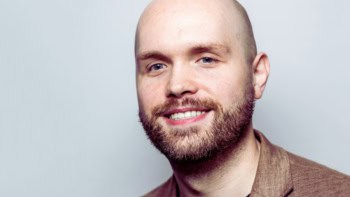This article is the sixth and last in a series of essays written by Black physicists and co-published with Physics Today as part of #BlackInPhysics week 2022, an event dedicated to celebrating Black physicists and their contributions to the scientific community, and to revealing a more complete picture of what a physicist looks like. This year’s theme is “joy in the diverse Black community”.

“To be a Negro in this country and to be relatively conscious is to be in a rage almost all the time.”
Those words, spoken by James Baldwin in a 1961 radio interview, are painfully true to this day. We’re nearly two and a half years removed from the brutal murder of George Floyd, which resulted in a national uprising of civil unrest and a public outcry for justice and acknowledgment that our lives matter. You would think the amount of coverage and attention would have resulted in some major societal shift.
But symbolic victories do not always translate to tangible change. How does a Black person find joy in a world where white supremacy still reigns and racial disparities in health, economics and more are as apparent as ever?
Isolation and lack of representation
Some might say that education, particularly higher education, is the societal equalizer that can counteract the effects of systemic oppression. But for Black physicists there is no sense of reprieve. It is easy to feel lonely and isolated because there is very little Black representation in physics. Of the 3820 physics PhDs conferred in the US to the classes of 2018 and 2019, only 18 recipients (less than half a percent) were African American, according to data from the American Institute of Physics.
I am pretty sure that all Black physicists can relate to attending conferences early in their career and feeling the constant need to prove themselves, to prove that they belong. You feel the anxiety of entering that hotel ballroom and not seeing anyone among the hundreds of attendees who resembles you. And let us not forget the pressure of representing the entire race when you are the only Black person in your breakout groups. Unless you attend conferences such as those sponsored by the National Society of Black Physicists, this is typically the reality for a young Black person in the field. It takes significant time and experience to transcend the sense of imposter syndrome. And even when you do, you still cannot help but recognize the lack of representation.
That sense of isolation poses a problem when young people make career choices. Representation and exposure are major factors for the students making those life decisions. It is crucial that future Black physicists see and be empowered by those who look like them and that they be exposed to a full spectrum of career possibilities. So as a Black physicist, I feel not only the need to make contributions to the physics community at large but also the responsibility and obligation to give back, to mentor and to be a role model to inspire.
Pathways for inclusion
Fortunately, despite the overall lack of change resulting from the recent national focus on race, there has been significant investment in diversifying representation in engineering and the physical sciences. Several federal and private institutions are working to establish pathways for minority inclusion, with an emphasis on supporting minority-serving institutions. That is one development that makes me hopeful for the future.
One new initiative is the $100 million IBM-HBCU Quantum Center, with which I am involved. The goals, according to IBM, are “to build a sustainable quantum research and education programme by increasing the number of Black students educated in Quantum Information Science and Engineering (QISE), strengthening research efforts of faculty at HBCUs [historically Black colleges and universities] in QISE, and providing opportunities for scholarship, fellowships, and internships for HBCU undergraduate and graduate students”. Particularly in a rapidly evolving field like QISE, it’s essential that we increase opportunities for students who might otherwise not be involved.

The joy of connecting quantum black dots
My research collaboration, which is supported by the IBM-HBCU Quantum Center, was recently awarded a three-year grant from the NSF. Along with supporting research in quantum electrodynamics, the money will go toward building a leadership and trainee plan that focuses on increasing access for students from populations that are historically underrepresented in science, technology, engineering and mathematics. The funding will allow me to leverage an established collaboration to provide additional mentorship and training as well as hands-on summer research opportunities for physics undergraduates at Morehouse College, where I am an assistant professor. This and similar collaborations create opportunities for students to enter and thrive in QISE.
Joy in clearing a path
I felt accomplished after receiving that first federal grant. I would categorize it as a time of happiness. I perceive happiness as a fluctuating, fleeting experience that is inherently dependent on an external stimulus. Happiness, like sadness or fear, is an emotion that can change. Now, as a result of the support from that grant, I can provide opportunities for students that foster their futures and the future of the physics community. That brings me joy. Unlike happiness, joy is a long-lasting state of being. Even on days that are harder than others, joy gives one the strength and power to continue. In my case, the joy of understanding the impact I am having on the future keeps me going.
So if there is any joy as a Black physicist, I would say it is the joy of clearing the proverbial path for the next generation of Black physicists and a new generation of leaders who can compete in the existing world, who can imagine a new one, and who are driven to do both.
Maybe one day we can look back and make a joyful noise, for we have done great things.



